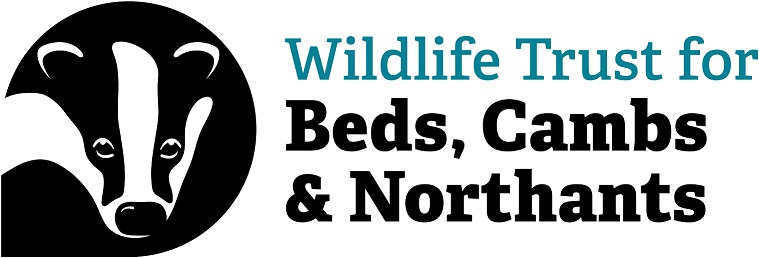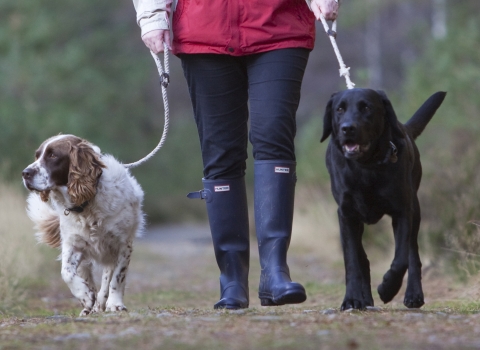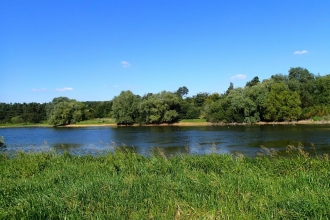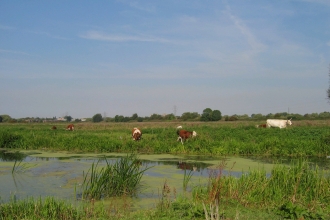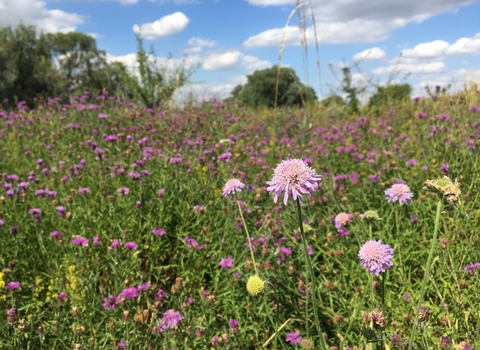The Wildlife Trust for Beds, Cambs, and Northants manages nature reserves for the benefit of wildlife, and to enable people to connect with nature.
Dogs and their responsible owners are welcome on most of our sites and our standard advice for visitors is that all dogs should be kept on a lead and prevented from entering water.
Why do we ask you to keep dogs on leads?
Protect wildlife
- The presence of dogs disturbs and stresses wildlife all year around: consider small mammals, nesting birds, reptiles and amphibians, and fledglings
- Constant disturbance reduces an animal’s fitness and affects breeding success
- Dog scent can deter wildlife, even after the dog has departed
- Topical flea treatments can poison water when they’re washed off fur
- Dogs in ponds disturb sediment, affecting aquatic life
- Dog mess unnaturally alters soil nutrient levels and contains chemicals harmful to wildlife. Bag it and bin it
Protect livestock
- Livestock, like sheep, cows and horses, are used to manage some of our nature reserves. They all potentially perceive dogs as predators,
regardless of relative size or breed - Many dog owners underestimate their dog’s drive to chase – keep your dog on a lead even if you don’t think they’ll worry livestock
- Pregnant livestock can miscarry if chased
Protect people
- Some people, especially children, may be upset by off-lead dogs, even if they are friendly
- Keep your dog on a lead
- Bag your dog’s mess and put it in the bin or take it home. Dog mess is unpleasant and disruptive
- Rare but real: dogs can carry worms causing toxocariasis and potential blindness
Being a responsible dog owner means:
Keeping your dog on a lead by default on nature reserves and in wilder green spaces:
- Even in areas with no obvious signs
- Regardless of whether other dogs are off-lead in the area
Picking up after your dog:
- Use bins where provided, or take full bags home to dispose of in your own bin
Set a positive example:
- Your dog may be well behaved, but not every dog is like this
- The more people see others with their dog on a lead, the more they will follow
Avoid walking large groups of dogs:
- Large groups of dogs can be difficult to control
- Commercial dog walking is not allowed on our nature reserves
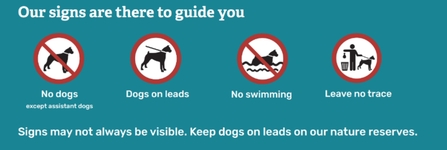
There are a small number of reserves that do not allow dogs
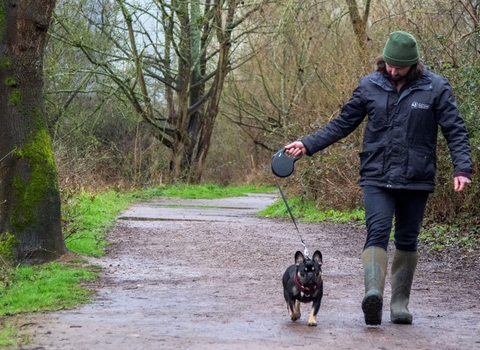
Holly Wilkinson
Dogs in the Nene Valley
Nene Wetlands Senior Ranger, Pete, tells us how you can enjoy wildlife responsibly with your dog.
